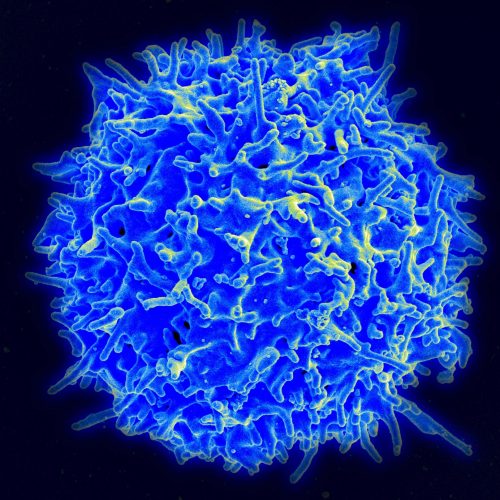New Vaccine Delivery for a more Effective Immune Response
You probably had a sore deltoid muscle after your flu vaccine this year. This is because this standard shot is delivered straight into muscle. But there’s another problem besides you getting a sore shoulder: by injecting the vaccine into the muscle, the vaccine bypasses most of the potent cells needed to initiate an immune response, meaning high vaccine doses must be given to stimulate immunity. In an epidemic, however, there might not be enough vaccine to immunize everyone with the high doses needed for muscle injection.
To find a better injection site, a team of scientists led by professor Stephanie Eisenbarth from the Yale School of Medicine investigated immune cells responsible for generating an effective vaccine response. The team knew that antigens in the vaccine activate immune cells called T-follicular helper cells (Tfh), which in turn enable a second type of immune cell, the B-cells, to make antibodies. However, the scientists found that another type of immune cell, called Type 2 dendritic cell, recognizes the antigens from vaccines and presents them to Tfh cells, which then activate B-cells in an immune cell relay race.
Vaccinating into muscle misses most of the dendritic cells needed to initiate the response chain. Instead, the findings, published in Science Immunology, suggest a new injection site for your next flu shot: the skin. “If we deliver the vaccine through the skin, then we are presenting the vaccine directly to the dendritic cells,” said Eisenbarth. This means that existing vaccine stores less likely to run out in the case of an epidemic, and that the vaccine can be more widely available.
This new delivery method creates a more effective immune response and requires only one-tenth of the original dose. While injecting into the skin is more painful, the 10-fold increase in efficiency outweighs the additional discomfort.
References
[1] Interview with Professor Stephanie Eisenbarth, Yale Department of Laboratory Medicine, interview on 01/25/2018
[2] https://immunology.sciencemag.org/content/2/18/eaam9169.full

